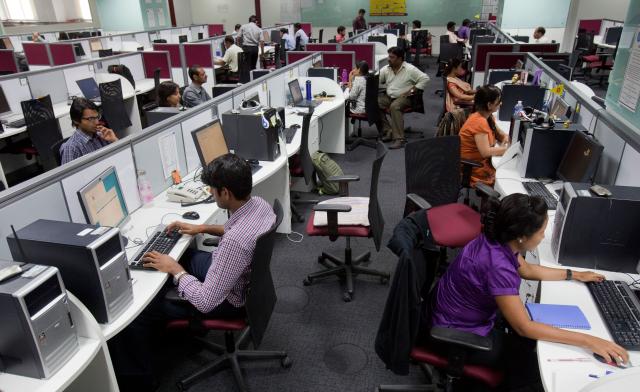News Point: With 315 MSF office and 39 MSF mall stocks, value of REIT-eligible stock seen to be highest in Bengaluru, followed by Mumbai. Bengaluru, Mumbai and Delhi-NCR cumulatively account for over 67% of total REIT-eligible stock
 Indian commercial real estate offers investment opportunity worth USD 43 – 54 billion (Rs. 2,88,758 crore-Rs. 3,60,948 crore) across the top 8 cities via REIT-eligible ready stocks as per #RICS and #Cushman & Wakefield report entitled “Commercial Real Estate: Steering Growth in Indian Cities”.
Indian commercial real estate offers investment opportunity worth USD 43 – 54 billion (Rs. 2,88,758 crore-Rs. 3,60,948 crore) across the top 8 cities via REIT-eligible ready stocks as per #RICS and #Cushman & Wakefield report entitled “Commercial Real Estate: Steering Growth in Indian Cities”.
The report was released at RICS Real Estate Conference 2016 – “Commercial Real Estate: Corporate Catalyst” with Cushman & Wakefield as research partners for the conference. A key focus of the conference discussions was evolving occupier demand, REITs and international standards.
The report estimates that the value of REIT-eligible stock is seen to be the highest in Bengaluru (USD 15.8 billion)/Rs. 1,05,213 crore) primarily due to the high volume of investible Grade developments. Mumbai (USD 14.5 billion/Rs. 96,461 crore) comes a close second due to higher capital values of commercial properties, despite having roughly half of Bengaluru’s REIT-able stock.
The estimated value of REIT –eligible stock in NCR is USD 11.04 billion / Rs. 73,423 crores which is the third highest. Further, it is estimated that approximately 315 million square feet (msf) of office inventory is eligible for REIT across the cities. The REIT-eligible inventory includes existing non-strata sold Grade A inventory, wherein Bengaluru, Mumbai and Delhi-NCR cumulatively account for over 67%.
Delivering the keynote address, Barnali Mukherjee, Chief General Manager, Securities and Exchange Board of India (SEBI), said, “We have come out with the IPO guidelines for the issuance of units of INVits. On same lines, we are working on the IPO guidelines for units of REITs. Since there are no accounting standards for REITs and INVits, we have set up sub-committees looking at the financials to be brought out with the offer documents as also the continuous disclosure to be made; also set up a sub-committee for issuance of valuations, who will come out with their report. On the valuations side, a separate chapter has been included in REIT regulations where lots of rights and responsibilities have been given to the valuer who has to comply with International Valuation Standards.”
“We have already received 4 applications for infrastructure investment trusts (INVits), where two applications have been processed and two are registered. We have come out with amendments on REIT regulations to bring more clarity and make it more acceptable but as of now, we haven’t received any applications for REITs. Whatever SEBI could do has already been done, in terms of removing key roadblocks such as capital gains tax and DDT and now we are looking forward to applications for REITs so that the REIT market can take off,” she added.
Sachin Sandhir, Global Managing Director – Emerging Business, RICS said “Commercial real estate is expected to see continued demand, fueled by positive business sentiment (especially in IT/ITES and new age digital businesses) based on major policy reforms undertaken by the Government. There is also likely to be considerable international investor interest in income yielding assets and the first REITs and INVits are not far away. REITs will drive the need for Indian commercial real estate to speak the language of international investors which, in turn will create demand international standards and corporate governance; professionalism and skills – which are all the things that the RICS Stands for.”
Sanjay Dutt, Managing Director, India, Cushman & Wakefield said, “REITs can provide a huge opportunity for developers and investors in India given the potential in the #Indian real estate market. REITs would help developers resolve their fund-raising issues and allow them to focus on completing their projects in a timely manner. Apart from the top 3 cities, Chennai and Pune have immense scope for REITs with approximately 34 MSF each of REITS-eligible stock. Going forward, by the end of 2017, Hyderabad’s REIT-able stock is expected to reach approximately 41 MSF. This would place Hyderabad’s REIT-able stock at 4th place, surpassing that of Chennai and Pune. With investor and occupier interests rising in Hyderabad, a high number of Grade A projects are likely to be completed enabling high REIT-able stock.”
Apart from the office sector, the retail sector too has high potential to generate rental income for investors. Since last year, private-equity firms have shown interest in investing in malls in India, indicating that there is acertain attractiveness in the retail shopping centre space owing to future prospects.
Sachin Sandhir further added, “RICS will continue to work to promote International Property Measurement Standards (IPMS) a global collaborative initiative with 70 global professional bodies, which will bring in a common basis of measuring assets. RICS is also advocating International valuation standards (IVS) and the RICS red book as a basis for valuations of these REIT-able assets. With a common basis of measurement and a common basis of valuations and skilled professionals to undertake delivery of grade A office space coupled with ease of doing business initiatives of the Government, Indian commercial real estate will surely realize its true potential.”
Devina Ghildial, Managing Director – South Asia, RICS said – “2016 looks to be a bright spark for commercial real estate. The asset class looks to be on solid footing with all the policy reforms and initiatives from the Government. The industry will see the emergence of not only REIT’s and INVits but new asset classes including new suburban business districts which will propel commercial real estate to produce a lot more grade A office space in the times to come. In fact, in Q1 2016 alone, the market has seen absorption to the tune of approximately 5 MSF.
“Going forward, we will also see corporate occupiers and investors starting to demand international standards and focus on creating sustainable assets, which will create long term value for international investors in the form of higher yields. This would be a key expectation from the development community. Now more than ever, the potential of commercial real estate is apparent, and this makes it an opportune time for REITs to find their way into the market,” she added.
Of the REIT-eligible stock across the 8 cities, Bengaluru has over 100 MSF of REIT-eligible stock (33% of total REIT-able stock), more than double of that of Mumbai. Approximately 75% of the total (all grades) office stock in Bengaluru is eligible for REIT investments. Delhi-NCR (56 MSF) and Mumbai (51 MSF) are expected to follow Bengaluru in terms of REIT-able stock as of Q1 2016.
REITs once implemented in India would enable investors to generate a stable source of income and also earn profits by trading the units of REITs, thereby increasing the attractiveness of REITs as investing medium. With the government exempting Dividend Distribution Tax (DDT) for Special Purpose Vehicle (SPV) of REITS in the Union Budget, the investment vehicle is likely to be more attractive for investors.
Mall stock of 39 MSF eligible for REIT investment in India
The top 8 cities have REIT-eligible mall supply of approximately 39 MSF, with Bengaluru, Delhi-NCR and Mumbai together accounting for about 64% of the retail inventory. Owing to the presence of large mall developers in Delhi-NCR, Mumbai and Bengaluru that operate some of the best malls in India, investors are likely to concentrate their investments in these cities. Mumbai (11 MSF) has the highest stock of REIT-able malls i.e. non-strata sold grade A malls followed by Delhi NCR (7.4 MSF) and Bengaluru (6.5 MSF).





